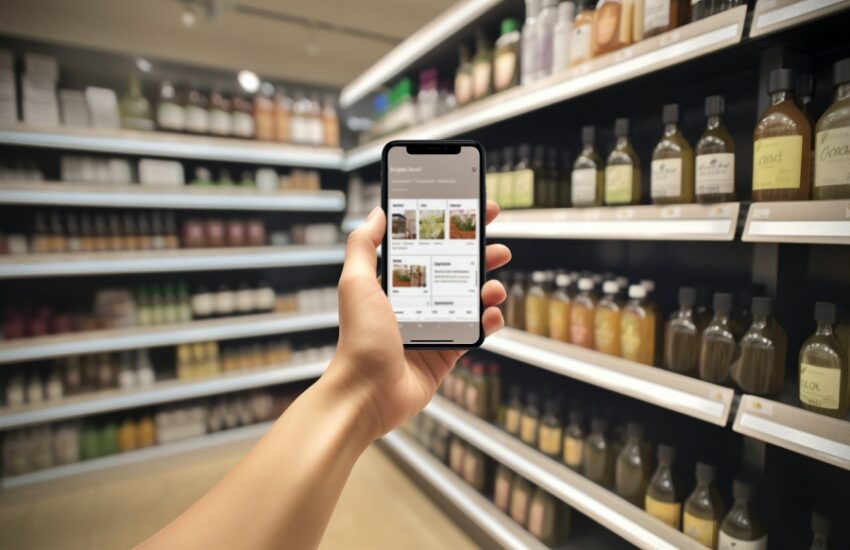AI-Powered Grocery Stores: Shopping Reinvented
The retail landscape has significantly evolved over time, featuring experiences like curbside pickup, eCommerce, and the Creator Economy, leading us to today’s AI-powered shopping experiences.
Specifically, the grocery shopping experience has been completely transformed, thanks to artificial intelligence.
First largely introduced in 2018 by Amazon via Amazon Go, prominent competitors, like Alibaba’s Hema, are following suit in this reinvented shopping experience. AI-powered grocery shopping is at the crossroads of futuristic fantasy and present-day reality. In other words, grocers are already using AI, but there is still so much more AI can offer for the grocery industry and grocery shopping customer experience.
Let’s dive into some applications of the AI grocery shopping experience, the impact of AI and grocery shopping, and the future of this technological advancement.
The AI Shopping Experience
The applications of AI for grocery stores are limitless; here are some of the most notable, present-day examples for both consumers and grocers.
- Personalized Shopping
Most customers purchase their favorite staple ingredients on a routine basis. Using AI, a customer’s shopping history can be analyzed to provide relevant recommendations. In addition to shopping history, AI can provide recommendations based on a customer’s need (e.g., wanting to become vegetarian, wanting to cut carbs) and even current trends.
- Smart Carts
Smart carts in grocery stores have been hyped up in conversations pertaining to autonomous check-out experiences. With smart carts, customers get a budget-forward, specialty shopping experience where they see the cost of their items add up in real-time.
- Checkout-Free Purchases
Many are following Amazon Go’s customer-friendly model of grocery shopping: simply walk in, get what you want, and walk out—no more waiting in line. In fact, even universities in American college campuses have started adopting this shopping experience. The University of California in San Diego just launched the first “Just Walk Out” program on a college campus. “Market staffers are no longer required at checkout counters, freeing them to assist customers, restock shelves or perform other customer service-related duties. In addition, the team receives real-time information about the most popular items.”
- Inventory Tracking
AI can track when merchandise is running low using in-store camera feeds. Additionally, notifications can be sent to store associates in real time for an efficient restock protocol. At Iterate.ai, we provide AI-powered inventory tracking technology for convenience stores, thanks to the power of our Interplay® low code application builder.
- Supermarket Price Optimization
Our Interplay platform can also support store managers using our supermarket price optimization tool. Now, managers can use Interplay to leverage cutting-edge AI engines to find their store’s patterns, including complexity, to advise on optimal price points. As customers buy through the application, patterns emerge in products, time, relationships, and price points.
Benefits of using AI in Grocery Shopping
There are a myriad of benefits to having AI exist in the grocery industry, let’s take a look at four of the most prominent ones.
- Time Efficiency
AI-driven grocery shopping platforms save consumers valuable time by offering features such as voice-activated shopping lists, automated reordering of frequently purchased items, and one-click checkout options. This convenience is particularly beneficial for busy individuals seeking efficient ways to manage their grocery needs.
- Cost Savings
Grocery retailers leveraging AI can optimize pricing strategies based on various factors, including market trends, competitor pricing, and customer behavior, the way Interplay does for our clients. This dynamic pricing approach ensures competitive prices, attracting cost-conscious consumers and fostering loyalty.
- Improved Fraud Detection and Security
AI-powered security measures, such as facial recognition and biometric authentication, enhance the security of online grocery transactions. Additionally, threat awareness technologies, like our AI-powered safety solution, add even more security in grocery stores. These features not only protect customers from potential danger but also contribute to building trust in AI-driven shopping experiences.
- Data-Driven Insights for Retailers
AI analytics provide retailers with valuable insights into customer behavior, preferences, and shopping patterns. Retailers can leverage this data to make informed business decisions, streamline their product offerings, and tailor marketing strategies to specific customer segments.
The Future
As this industry-specific technology continues to evolve, let’s take a closer look at what the future holds.
- Voice Commerce
Voice-activated assistants are gaining traction in grocery shopping. Users can add items to their shopping list, place orders, and navigate through shopping apps using natural language commands. The convenience of hands-free shopping is driving the integration of voice technology into AI grocery experiences.
- Augmented Reality (AR) Shopping
AR is transforming the way customers interact with products. In AI grocery shopping, AR can provide customers with immersive experiences, allowing them to visualize products in their homes before making a purchase. This trend enhances the online shopping experience by bridging the gap between physical and digital realms.
- Smart Fridges and Pantries
AI-powered smart fridges and pantries are equipped with sensors to monitor inventory levels. These devices can automatically add items to a shopping list or place orders when supplies are running low. This trend simplifies the replenishment process and ensures that households are always well-stocked.
- Robotics in Warehousing and Delivery
The use of robotics in the supply chain is becoming more prevalent. AI-driven robots are employed in warehouses for tasks such as picking and packing, optimizing efficiency, and reducing human labor. Additionally, autonomous delivery vehicles are being tested to streamline the last-mile delivery process.
- Sustainability and Ethical Shopping
Consumers are increasingly conscious of the environmental and ethical impact of their purchases. AI grocery shopping platforms incorporate sustainability features, provide information about the environmental footprint of products, and suggest eco-friendly alternatives. This trend aligns with the growing demand for ethical and sustainable consumption.
Conclusion
The use of AI in grocery stores will grow 400% by 2025. This is the new way to grocery shop; it is becoming our usual way of doing one of the most fundamental human tasks. From the inception of AI-powered stores like Amazon Go to the widespread adoption of personalized shopping, smart carts, and checkout-free purchases, the impact of AI on the grocery industry is palpable. The present applications of AI, such as personalized recommendations and smart inventory tracking, showcase its immediate benefits for both consumers and retailers. Looking ahead, the future of AI in grocery shopping holds exciting prospects, with voice commerce, augmented reality, smart fridges, and sustainability practices poised to redefine further and enhance how we procure our everyday essentials. As the industry continues to embrace these technological advancements, the synergy between AI and grocery shopping promises a future that seamlessly combines innovation, efficiency, and a personalized shopping experience.

